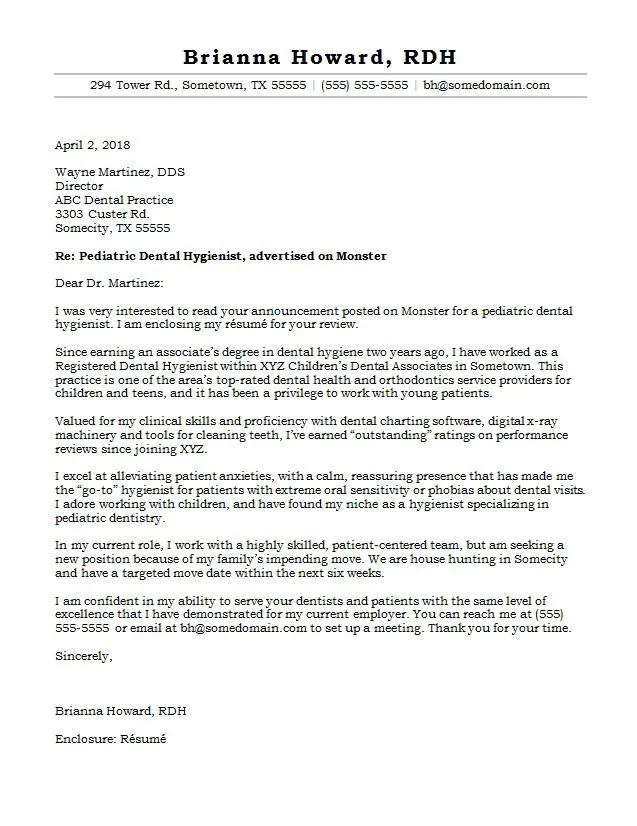What is a Cover Letter (And Why It Matters)
A cover letter is a crucial document that accompanies your resume when applying for a job. It serves as your first introduction to a potential employer, providing an opportunity to showcase your personality, skills, and enthusiasm for the position. Unlike a resume, which presents a factual overview of your experience, a cover letter allows you to tell a story, explaining why you are the perfect fit for the role and the company. Think of it as your personal sales pitch, designed to persuade the hiring manager to read your resume and consider you for an interview. A well-crafted cover letter can significantly increase your chances of landing an interview by highlighting your relevant skills and experiences, expressing your genuine interest in the opportunity, and demonstrating your understanding of the company’s needs. In today’s competitive job market, a strong cover letter is no longer optional; it’s essential.
Key Components of a Cover Letter
A cover letter consists of several key components, each playing a vital role in making a positive impression. Understanding these components and how to effectively use them is critical to creating a compelling cover letter. These elements, when combined strategically, paint a clear picture of who you are and why you’re the ideal candidate.
Header
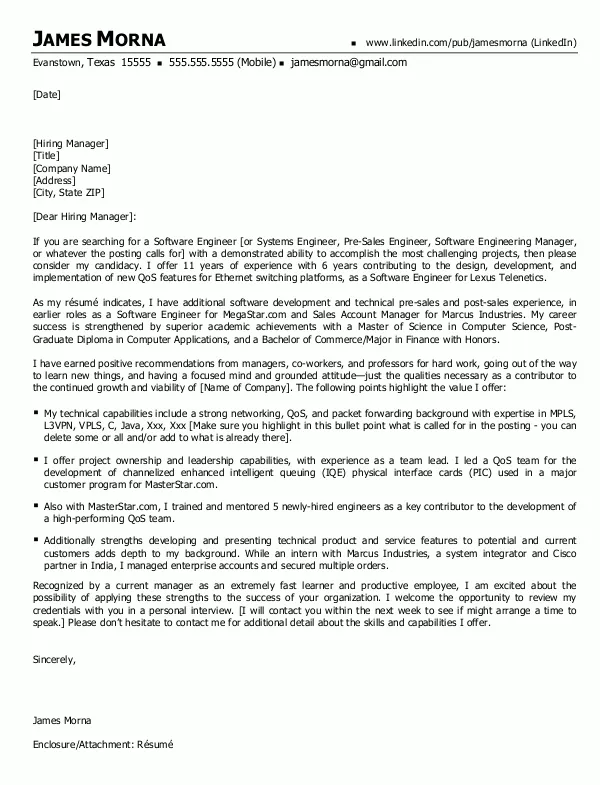
The header of your cover letter should include your contact information, such as your name, phone number, email address, and optionally, your LinkedIn profile URL. This section allows the hiring manager to easily reach you. Ensure the formatting is clean and professional.
Greeting
The greeting should be formal and professional. Ideally, address the hiring manager by name; if you can’t find a specific name, use a general greeting like ‘Dear Hiring Manager’. Avoid generic greetings like ‘To Whom It May Concern’, as they can make your letter feel impersonal.
Introduction
The introduction should immediately grab the reader’s attention. State the position you are applying for and how you learned about the opportunity. Briefly mention your key qualifications or the reason you are excited about the role. This sets the stage for the rest of your letter.
Body Paragraphs
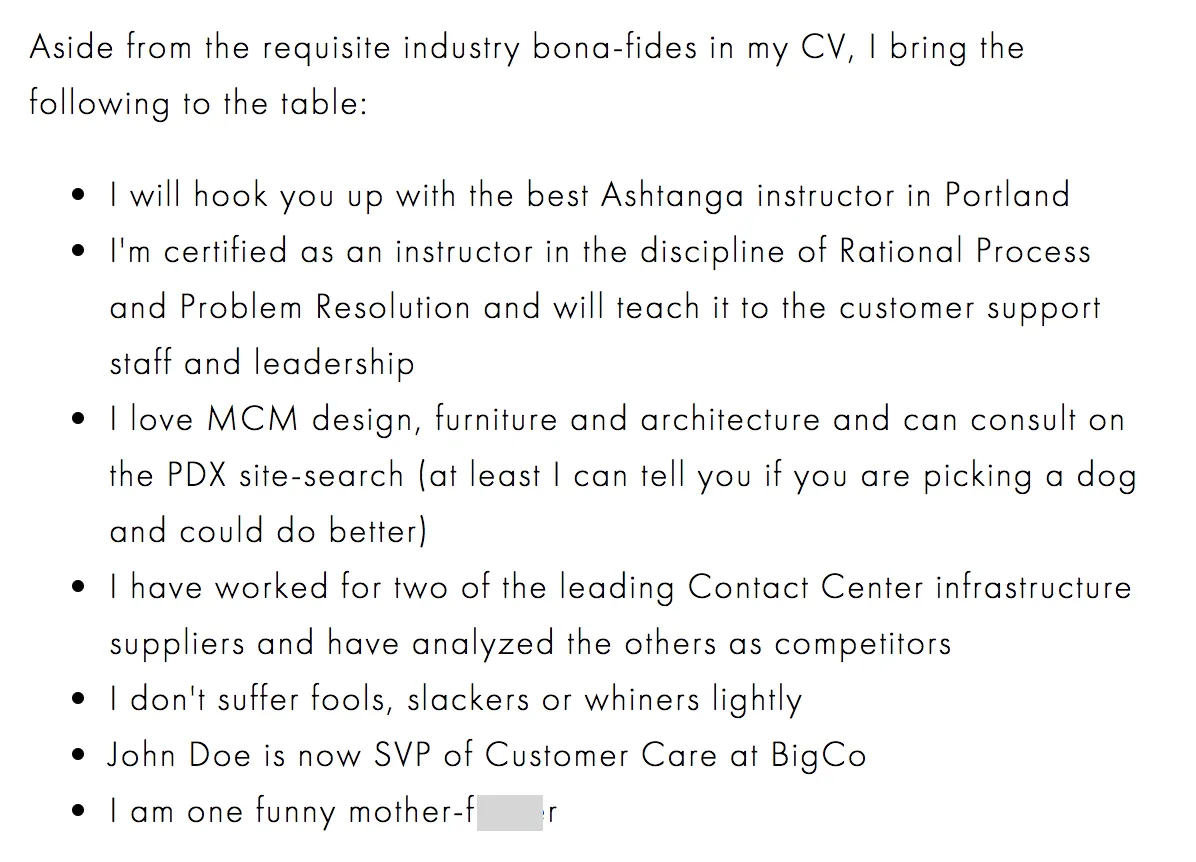
The body paragraphs are where you elaborate on your qualifications and experiences. This is your opportunity to showcase your skills and how they align with the job requirements. Provide specific examples of your achievements and how you’ve contributed to previous employers. This section should be tailored to each job application, highlighting the most relevant aspects of your experience.
Highlight Your Skills & Experience (Example 1)
When highlighting your skills, use the STAR method (Situation, Task, Action, Result) to structure your examples. Describe the situation or challenge you faced, the task you needed to complete, the actions you took, and the results you achieved. This approach provides a clear and concise way to demonstrate your abilities and impact. For example, instead of saying ‘Managed social media accounts’, state, ‘Increased social media engagement by 30% in six months by implementing a new content strategy and scheduling tool.’ This shows not only what you did but also the positive outcome.
Tailoring to the Job Description
Carefully review the job description and identify the key skills and qualifications the employer is seeking. Customize your cover letter to directly address these requirements. Use the same keywords and phrases from the job posting where appropriate, but ensure your statements are authentic and reflect your actual skills and experiences. Avoid simply repeating the job description; instead, illustrate how your skills and experiences specifically meet the needs of the role.
Quantify Achievements
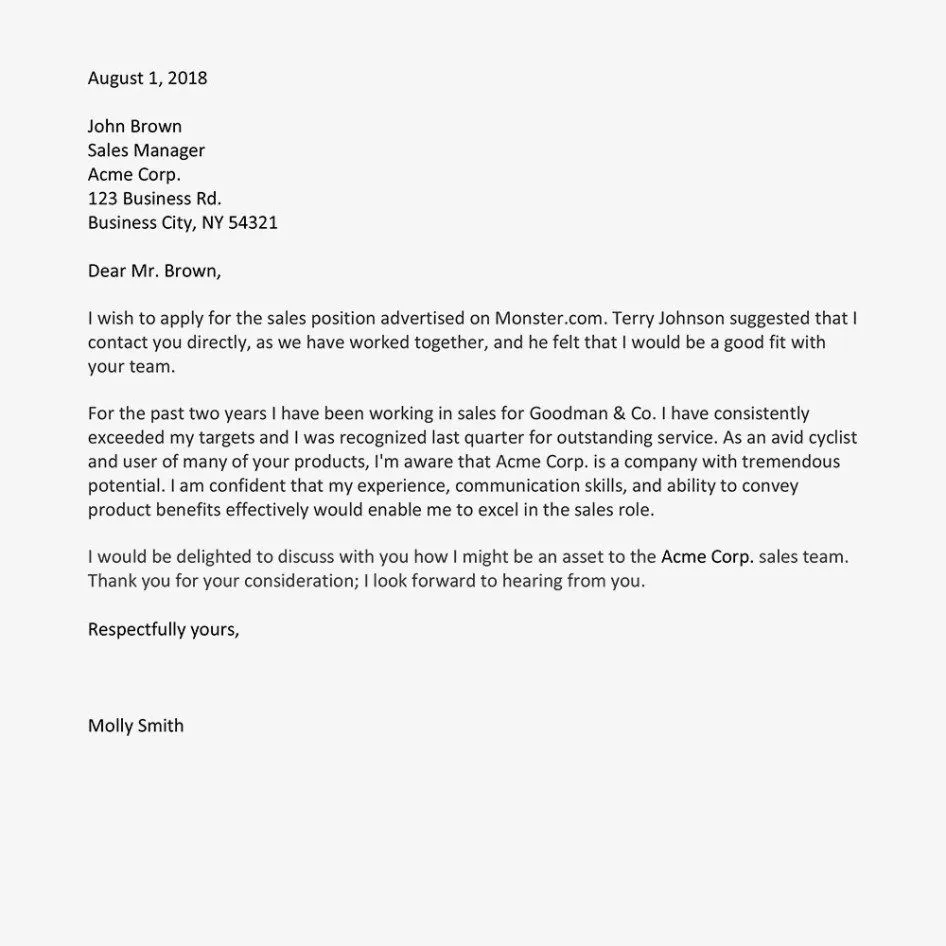
Whenever possible, quantify your achievements with numbers and data. Instead of saying ‘Improved customer service’, say ‘Improved customer satisfaction scores by 15% through implementing a new training program’. Quantifiable results provide concrete evidence of your abilities and make your accomplishments more impactful. Use metrics like percentages, dollar amounts, or specific project outcomes to demonstrate the value you brought to previous roles.
Showcase Your Personality
While maintaining a professional tone, let your personality shine through. Show enthusiasm for the role and the company. This helps the hiring manager get a sense of who you are beyond your skills and experience. Injecting a bit of personality makes your cover letter more memorable and demonstrates your genuine interest in the opportunity.
Body Paragraphs (Example 2)
Another essential aspect of the body paragraphs is explaining why you are interested in the specific company. Research the company’s mission, values, and recent projects. Demonstrate your understanding of their industry and how you see yourself contributing to their success. Referencing specific aspects of the company, such as recent achievements or initiatives, shows that you have done your homework and are genuinely interested in working there. This is more compelling than generic statements of interest.
Call to Action and Closing

The closing paragraph should reiterate your interest in the position and express your eagerness for an interview. Thank the hiring manager for their time and consideration. Include a call to action, such as stating that you look forward to discussing your qualifications further. Ensure your closing is professional and leaves a positive lasting impression.
Formatting and Design
The formatting and design of your cover letter are just as important as its content. A well-formatted letter is easy to read and visually appealing, which can significantly enhance its impact. Proper formatting demonstrates your attention to detail and professionalism.
Font and Readability
Choose a professional and easy-to-read font, such as Times New Roman, Arial, or Calibri. Keep the font size between 10 and 12 points. Use consistent formatting throughout the document, including spacing, margins, and alignment. Avoid using fancy or overly decorative fonts that could distract from the content.
Length and Structure
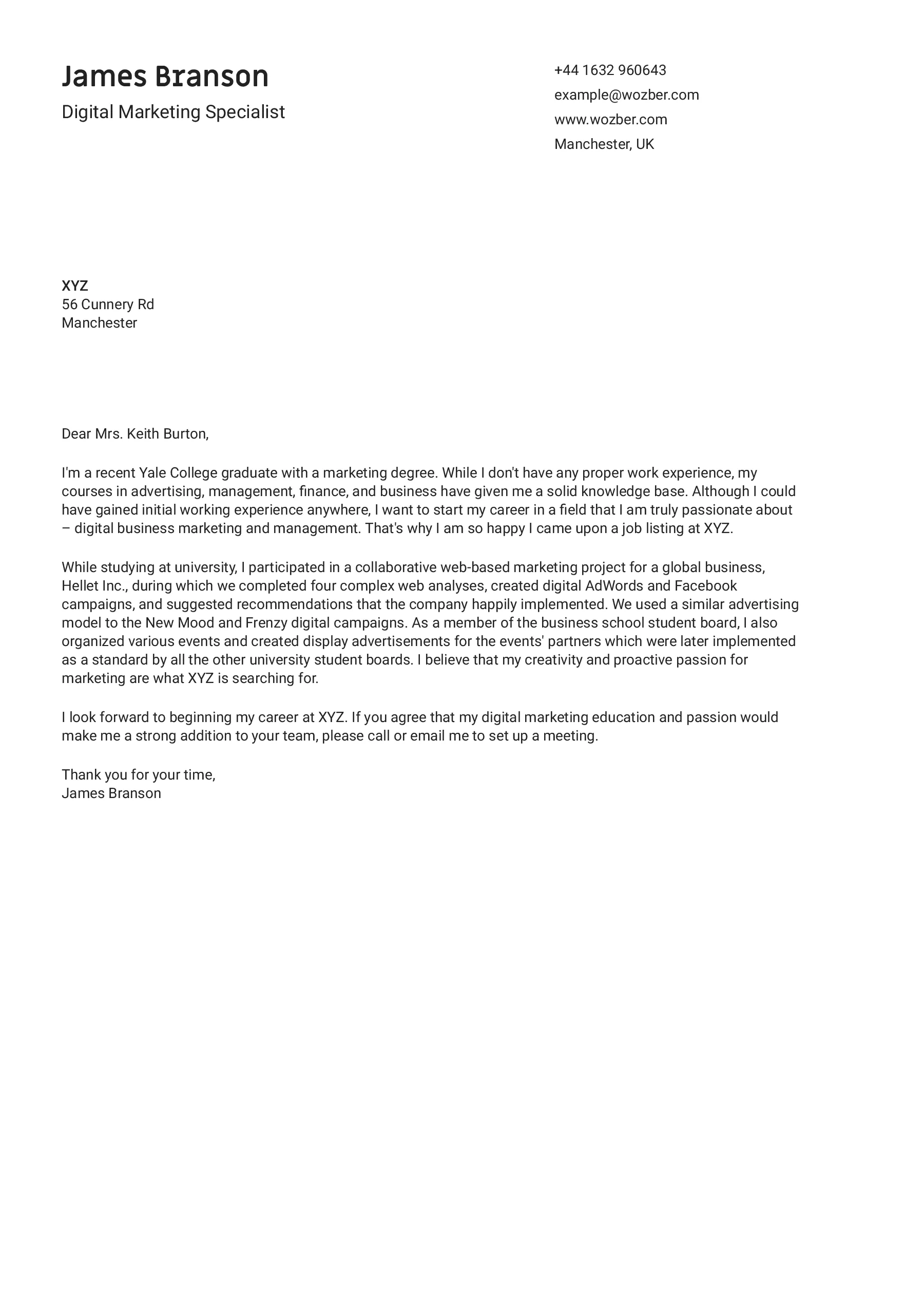
Keep your cover letter concise, ideally no more than one page. Use clear and concise language. Break up large blocks of text with shorter paragraphs and bullet points to improve readability. Use white space effectively to avoid a cluttered appearance. A well-structured cover letter guides the reader through your key qualifications and makes it easier for them to understand your message.
Top 5 Cover Letter Examples
Here are examples of cover letters for various situations. These cover letter examples are designed to inspire you and provide a framework for creating your own compelling cover letter. They cater to different experience levels and scenarios, giving you a comprehensive understanding of how to tailor your letter to your specific needs.
Example 1 Entry-Level Position
For entry-level positions, focus on highlighting your relevant skills, education, and any internships or volunteer experiences. Show enthusiasm and eagerness to learn. Demonstrate your ability to adapt to new environments and your willingness to take on challenges. Example entry-level cover letters often emphasize academic achievements, relevant coursework, and extracurricular activities that demonstrate leadership and teamwork skills.
Example 2 Career Change
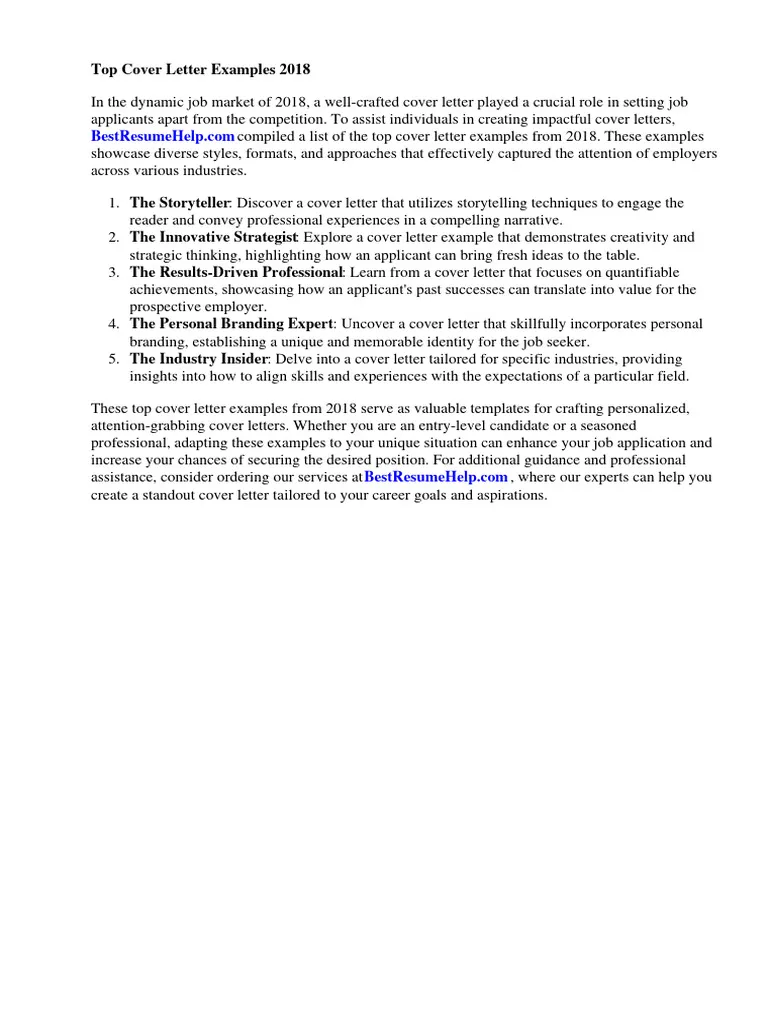
When making a career change, it’s crucial to emphasize transferable skills from your previous roles. Clearly explain why you are transitioning careers and how your skills align with the new position. Address any potential concerns about your lack of direct experience by highlighting your adaptability and willingness to learn new skills. Career change cover letters should clearly articulate the candidate’s motivations for the switch and how their past experiences are relevant to the new role.
Example 3 Experienced Professional
Experienced professionals should focus on their significant achievements, leadership skills, and contributions to previous employers. Quantify your accomplishments whenever possible. Show how you’ve consistently exceeded expectations and delivered results. This type of cover letter should highlight your proven track record of success and your ability to drive positive outcomes. The letter should present a concise summary of your career highlights, demonstrating your expertise and accomplishments.
Example 4 Addressing a Specific Issue
Sometimes, you may need to address a specific issue, such as a gap in your employment history or a lack of certain qualifications. In these situations, use the cover letter to explain the situation and how you have addressed it. Be honest and upfront, but focus on the positive aspects of your experience and your eagerness to learn and contribute. This kind of cover letter should tackle potentially problematic issues head-on, demonstrating self-awareness and a proactive approach to job seeking.
Example 5 Addressing a Specific Person
If you know the hiring manager’s name, use it in your greeting. Research the person and the company thoroughly. Tailor your letter to reflect your knowledge of their work and the company’s goals. Personalize your letter to show you’ve put in the effort and are genuinely interested in the opportunity. Such personalized cover letters often reference specific achievements of the hiring manager or the company.
Monster Cover Letter Template Recommendations
Monster.com provides a wealth of resources, including cover letter templates, to help you create a compelling application. Utilizing these resources can save time and ensure your letter follows industry best practices. Always customize templates to reflect your unique skills and experiences.
Tips for Customization
Customization is key to creating a cover letter that stands out. Avoid using generic templates without modification. Tailor your letter to each job application by researching the company, analyzing the job description, and highlighting the most relevant skills and experiences. This demonstrates that you have a genuine interest in the role and the company, and that you’ve taken the time to understand their needs.
Proofreading and Editing
Before submitting your cover letter, carefully proofread and edit it for any errors in grammar, spelling, and punctuation. Errors can undermine your credibility and make a negative impression. Ask a friend or family member to review your letter for clarity and accuracy. A polished cover letter reflects your attention to detail and professionalism.
Final Thoughts and Further Resources
A well-crafted cover letter is a powerful tool in your job search. By following these guidelines and examples, you can create a cover letter that effectively showcases your skills, experiences, and enthusiasm for the role. Remember to tailor your letter to each job application, proofread carefully, and let your personality shine through. For additional resources, visit sites like Monster.com and other career advice websites.
